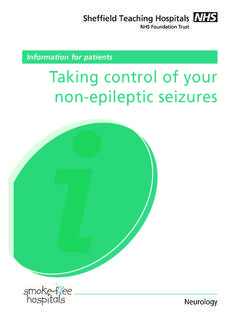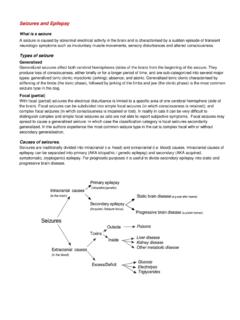Transcription of Neonatal Birth Traumas or injuries - University of …
1 1 Lecture 3 Professor Dr Numan Nafie Hameed Al-Hamdani Neonatal Birth Traumas or injuries : These are avoidable and unavoidable injuries to the NB that occurs during the Birth process. These are less common now because of more use of C/S. They can occur during prenatal, natal, or postnatal period. Risk factors for Birth injuries include: prim-parity, maternal pelvic anomalies, prolonged or unusually rapid labor, oligohydraminos, malpresentation of fetus, use of mid-forceps or vacuum extraction, versions and extractions, VLBWT or extreme prematurity, fetal macrosomia or large fetal head, and fetal anomalies.
2 Evaluation of Birth injuries : 1. History 2. Thorough examination, including neurologic examination 3. Special attention to symmetry of structure and function, cranial nerves, range of motion of joints, integrity of scalp and skin. Types of Birth injuries : 1. Soft tissues injuries : a. Caput succedaneum: it is subcutaneous, extra-periosteal fluid collection over the presenting part in vertex presentation. It extends beyond the suture lines, usually associated with molding of the skull bones, it appears at Birth and resolve in few days, it requires no treatment.
3 B. Cephal hematoma: it is sub-periosteal Hg due to rupture of vein of Galen between the skull and periostium. It is confined to suture lines, usually over parietal bones, the centre feel soft, it becomes visible on second or third day of life, it resolves over several weeks(8 weeks), when they are extensive can cause jaundice and anemia. Occasionally associated with linear fracture of skull (5-20%), it requires no treatment, but treats infection, anemia and 2 jaundice. Aspiration of blood collection is contraindicated as it will induce infection. Table showing the difference between caput and cephalohematoma c.
4 Chignon: bruising edema from ventose extraction delivery. d. Bruising of face after face presentation, and Bruising of genitalia after breech delivery due to repeated PV exam. e. Abrasion of the skin from scalp electrodes applied during labor, or accidental scalpel incision at C/S. f. Subgaleal Hg: it is sub-aponeurotic Hg (under skull aponeurosis), spread rapidly over head downward to the eye, very uncommon, may be associated with serious blood loss, and may be associated with ICH, 90% associated with vacuum extraction. It requires no treatment unless there is shock or ICH that require blood transfusion.
5 G. Severe or fatal injuries (very rare) from tear of the tentorium cerebelli or fax cerebri. h. Subconjuctival or Retinal Hg: frequent and common. It requires no treatment. 2. Nerve injuries : A. Brachial plexus nerve injuries : this result from traction to the cervical nerve roots. They may occur after breech delivery or with shoulder dystocia. 3 Erbs`palsy (waiters` tip posture): it is upper nerve roots injury (C5-C6). The moro, biceps reflexes are absent, but grasp reflex is preserved. Klumpks` palsy (C7,8,T1): the lower nerve roots are involved less frequently, resulting in weakness of long flexors of wrists and fingers and intrinsic muscles of the hand.
6 The grasp reflex is absent. Immobilize for one week, then passive range of motion exercise of all joints of limb. It needs physiotherapy from second week of life. Most palsies resolve over few weeks. Occasionally following severe injury, paralysis is permanent. Surgical reconstruction of the nerve is attempted. B. Facial nerve injury: most common peripheral nerve injury in neonates. May result from compression of the facial nerve by forceps blades or against mothers` pelvis. It is usually transient, seen as asymmetrical crying face. C. Phrenic nerve injury: it involves 3rd, 4th, 5th cervical nerves.
7 There is ipsilateral diaphragm paralysis, 75% have brachial plexus injury, present with respiratory distress and cyanosis, diagnosed by U/S, fluoroscopy. 3. Fractures: A. Skull fractures: They are rare, usually linear, usually in parietal bones, they requires no treatment, just observation. Depressed fracture usually in parietal or frontal bones, they are unusual, but may be seen with complicated forceps delivery. If no neurologic deficit ---- no treatment. If neurologic deficit--- do CT scan surgical elevation. B. Fracture clavicle: usually from shoulder dystocia.
8 A snap may be heard at delivery, or infant may have reduced movement of the arm on affected side, or a lump from callus formation over clavicle may be felt. The prognosis is excellent. C. Fracture of humerus and femur: usually mid-shaft, occurring at breech delivery, they present with loss of spontaneous arm or leg movement, pain and swelling in passive movement if displaced. Diagnosis by x ray, treatment by splinting, close reduction and casting. 4. Visceral trauma : trauma to liver, spleen, and adrenals: they are uncommon, seen in macrosomic infants, very premature infants, with or without breech or vaginal deliveries.
9 They may be asymptomatic, or present with shock, pallor, jaundice. They are diagnosed by ultrasound. Sub-capsular hematoma of liver is the most common, may follow macrosomia, hepatomegaly, breech presentation. It is suspected if infant had anemia, hypovolemia, shock, but no evidence of IVH. It is usually seen in 1-3 days after Birth . Serial PCV is needed suggesting blood loss. Management by restoring blood volume, correct coagulation disorder, and surgical consultation for possible laprotomy. 4 5. Intracranial Hg: subdural Hg, subarachnoid Hg, per-ventricular Hg, intra-ventricular Hg, Intra-parenchymal Hg or cerebral Hg.
10 Subdural Hemorrhage (SDH): usually seen in association with Birth trauma , cephalo-pelvic disproportion, LGA babies, forceps deliveries, skull fracture, and postnatal head trauma . It may be asymptomatic initially as Rbcs undergoes hemolysis; the water is drawn into the Hg resulting in expanding symptomatic lesion. Anemia, vomiting, seizure , macrocephaly may occur in infants who is 1-2 months old with SDH. Occasionally massive SDH in neonate by rupture of the vein of Galen or by inherited coagulation disorder as hemophilia. Treatment of all symptomatic SDH is surgical evacuation.






